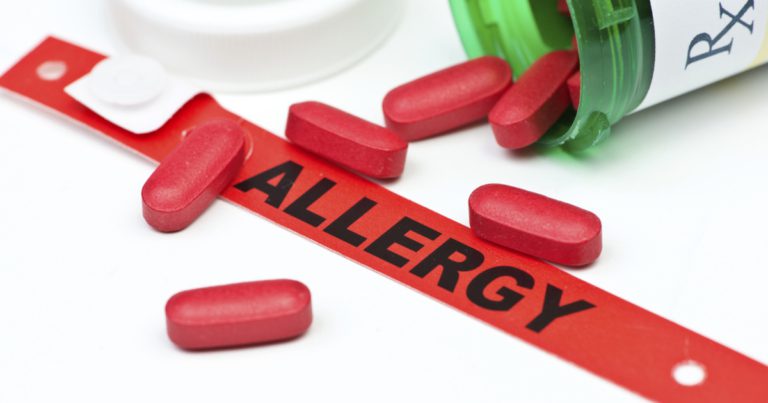Penicillin allergy testing can help extend the scope of your practice and provide a valuable service to your patients. But ICD-10 and CPT coding for penicillin allergy testing can be confusing. Here’s what you need to know to get reimbursed for this important service.
ICD-10 coding for drug allergy testing
T codes are used when evaluating patients for drug allergies. To code for an adverse effect of a drug that has been correctly prescribed and properly administered:
First, select one adverse effect from below (1,2,3,4 or other):
- T88.6XXA: Anaphylactic reaction due to an adverse effect of correct drug properly administered, initial encounter (or D- subsequent visit following completed evaluation.)
- L27.0: Dermatitis (generalized), due to drugs taken internally
- L27.1: Dermatitis (localized), due to drugs taken internally
- L50.0: Urticaria allergic, due to drug
Next, choose the code for the correct drug below:
- Adverse effect of Penicillin T36.0X5A (or D)
- Adverse effect of Cephalosporins & other beta-lactam antibiotics T36.1X5A (or D)
Be sure to document why penicillin testing is required if the reaction was to a Cephalosporin.
T codes require a seventh character of A, D, or S (“S” is rarely used by allergists). “A” is used for the initial encounter and continues until active treatment has ended. “D” is used for subsequent encounters when the patient is receiving routine care for the condition. Sometimes it is not clear what the correct seventh character should be, and some insurers may have their own unique interpretations. Therefore, you may need to resubmit the claim with a different seventh character if the initial claim is denied.
CPT coding for drug allergy testing and oral challenge
Start by documenting the reason for doing the test – this is essential.
CPT 95018 is the correct code to use when skin testing for an allergy to any drug. It should be used for both prick testing and intradermal testing. On the claim form, on one line, enter 95018 and the total number of prick and intradermal tests performed. Note that Medicare does not allow billing for positive or negative controls, so you cannot count those tests when billing Medicare. Most commercial carriers will pay for controls, but we recommend checking with individual carriers to confirm their policies.
CPT 95076 and 95079 are the codes to use for any additional oral drug challenge.
- 95076 is billed for the first 61-120 minutes of the challenge.
- “Time” begins as soon as work begins on the challenge (including explaining the test to the patient) and ends with a negative result or with reactions that need to be treated.
- A minimum of 61 minutes (more than 50% of the total time for the code) must be spent on this challenge before you are eligible to bill this code.
- If you spend less than 61 minutes on this challenge (for example, if a patient has a positive reaction so testing is stopped), bill an E&M code instead.
- Note that this code requires “sequential and incremental ingestion of test items,” which suggests at least two doses be used for the oral challenge.
- 95079 is billed in addition to 95076 after testing has reached at least 151 minutes.
- It is billable for each additional hour beyond the first 120 minutes of the challenge.
- An additional 31 minutes (>50% of the total time) must pass before it can be added to 95076.
For everything you need to know about penicillin allergy testing, check out the College’s Penicillin Toolkit. It includes instructions for penicillin skin testing, consent forms, an insurance appeal letter template, patient education and more. Join the College in supporting National Penicillin Allergy Day on Sept. 28 and show your support for testing unverified penicillin allergy!




